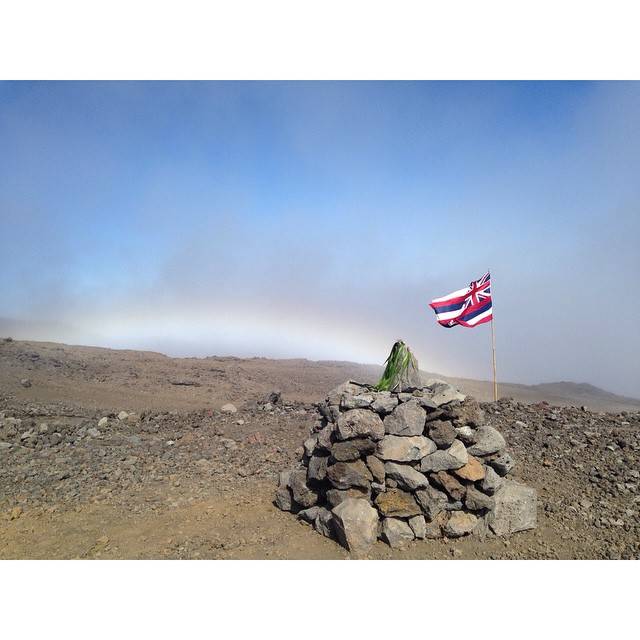The rapid removal of two ahu at the Thirty Meter Telescope site on Maunakea last week came after years of failed attempts at communication between the University of Hawaii and TMT protesters, UH advisers told the Tribune-Herald.
The two altars were built at the TMT site in 2015 by protesters against the construction of the $1.4 billion telescope, but were removed last Thursday by state authorities with little warning.
However, Greg Chun, UH special adviser on Maunakea, said the university made several attempts to reach out to protesters — some of whom refer to themselves as “protectors” — to negotiate with them regarding the use of the TMT site during the four years between the construction and demolition of the ahu, particularly after the state Supreme Court approved the project’s permit last year.
“It was difficult, because we had to work primarily through third parties,” Chun said. “But we reached out several times to the folks we understood to be involved with the ahu. But they never really responded.”
Chun said there was one occasion where UH was able to engage with an individual opponent, but said conversations were ultimately unproductive.
“We couldn’t come to an agreement about the site,” Chun said.
Although the ahu were removed Thursday without the protesters’ input, Chun said the university did consult with Native Hawaiian practitioners via the Kahu Ku Mauna: a volunteer community-based council of Native Hawaiians who advise UH, the Maunakea Management Board and the Office of Maunakea Management on Hawaiian cultural affairs.
Kahu Ku Mauna member Kalepa Baybayan said the board easily came to a unanimous decision regarding the ahu, ultimately agreeing that the altars did not meet historical standards.
Baybayan explained that the Kahu Ku Mauna board is guided by a series of policies intended to ensure proper stewardship of the UH Management Area. The ahu were found to very clearly violate those policies, he said.
“The number one problem is that they were obstructions,” Baybayan said.
One of the ahu was located in the center of the TMT site, while the other was directly blocking the roadway leading to the TMT site.
Baybayan emphasized that the board’s primary concern with the ahu was the obstruction they posed to the TMT site, but said there were a number of other issues with the ahu that the board used to determine their lack of cultural significance.
“They were not a historical site, for one — you have to be there for 50 years or more to be considered a historical site,” Baybayan said. He also pointed out that one of the ahu — the one blocking the roadway — was not constructed using locally quarried stone, as is traditional, but with imported beach rock.
While Kahu Ku Mauna advised UH that the ahu were not culturally significant enough to preserve, Baybayan said the board was not informed about the demolition of the altars ahead of time. Nor was the board involved in the state’s decision to remove the two hale, additional structures that were erected by opponents on nearby state land before being dismantled at the same time as the ahu.
“They were on state land, so we didn’t deal with them at all,” Baybayan said.
Similarly, Baybayan said Kahu Ku Mauna has not discussed the new ahu that was erected last week at the site of one of the hale across from the Visitor Information Stations.
Email Michael Brestovansky at mbrestovansky@hawaiitribune-herald.com.



